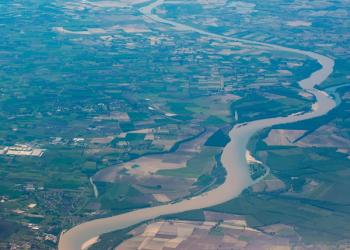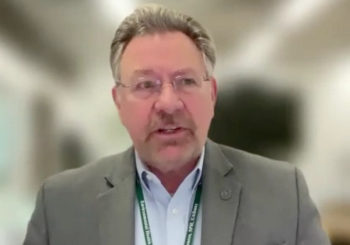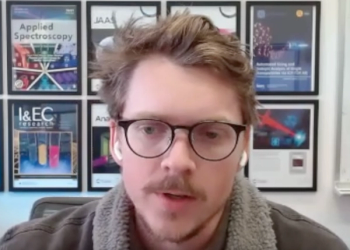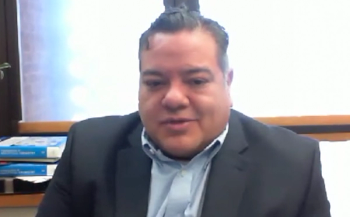
Richard P. Van Duyne Receives Gold Medal Award from the New York Society for Applied Spectroscopy
The 2017 New York Society for Applied Spectroscopy Gold Medal Award was presented to Richard P. Van Duyne at the Eastern Analytical Symposium and Exposition in Plainsboro, New Jersey on October 13.
The 2017 New York Society for Applied Spectroscopy Gold Medal Award was presented to Richard P. Van Duyne at the Eastern Analytical Symposium and Exposition in Plainsboro, New Jersey on November 13. The award, established in 1952, recognizes outstanding contributions to the field of Applied Spectroscopy.
Van Duyne, a professor at Northwestern University, is best known for discovering surface-enhanced Raman spectroscopy (SERS), inventing nanosphere lithography, and developing ultrasensitive nanosensors based on localized surface plasmon resonance (LSPR) spectroscopy. Among his ongoing research interests are SERS, LSPR spectroscopy, plasmonics, nanoscale biosensors, atomic layer deposition, ultrahigh vacuum tip-enhanced Raman spectroscopy (UHV-TERS), electrochemical tip-enhanced Raman spectroscopy (EC-TERS), and surface-enhanced femtosecond stimulated Raman spectroscopy (SE-FSRS). He has published more than 375 papers and has an h-index of 96.
He has been recognized for his accomplishments with the Spiers Memorial Award, Royal Society of Chemistry, Faraday Division (2017); election to the American Institute of Medical and Biological Engineers (2016); the Theophilus Redwood Award, Royal Society of Chemistry (2015); the E. Bright Wilson Award in Spectroscopy, American Chemical Society (2014); the Thomson Reuters List of Highly Cited Researchers (2014, 2015, 2016); the Charles Mann Award in Applied Raman Spectroscopy, Society of Applied Spectroscopy (2014); the Sir George Stokes Award, Royal Society of Chemistry (2013); Thomson Reuters list of top 100 chemists over the period 2000-2010 as ranked by the impact of their published research (2011); Charles N. Reilley Award, Society for Electroanalytical Chemistry (2011); election to the US National Academy of Sciences (2010); Analytical Chemistry Award, American Chemical Society, (2010); Bomem-Michelson Award, Coblentz Society (2010); Ellis R. Lippincott Award, Optical Society of America (2008); L’Oreal Art and Science of Color Prize (2006); Nobel Laureate Signature Award for Graduate Education, American Chemical Society (2005); Election to the American Academy of Arts and Sciences (2004); The Earle K. Plyler Prize for Molecular Spectroscopy, American Physical Society (2004); Excellence in Surface Science Award of the Surfaces in Biomaterials Foundation (1996); Pittsburgh Spectroscopy Award (1991); National Fresenius Award, American Chemical Society (1981); and the Coblentz Memorial Prize in Molecular Spectroscopy (1980).
Van Duyne is also a fellow of the Society of Applied Spectroscopy (2013), the Royal Society of Chemistry (2013), the American Physical Society (1985), and the American Association for the Advancement of Science (1983). He received his B.S. degree from Rensselaer Polytechnic Institute in 1967 and a PhD in analytical chemistry from the University of North Carolina in 1971.
Newsletter
Get essential updates on the latest spectroscopy technologies, regulatory standards, and best practices—subscribe today to Spectroscopy.




